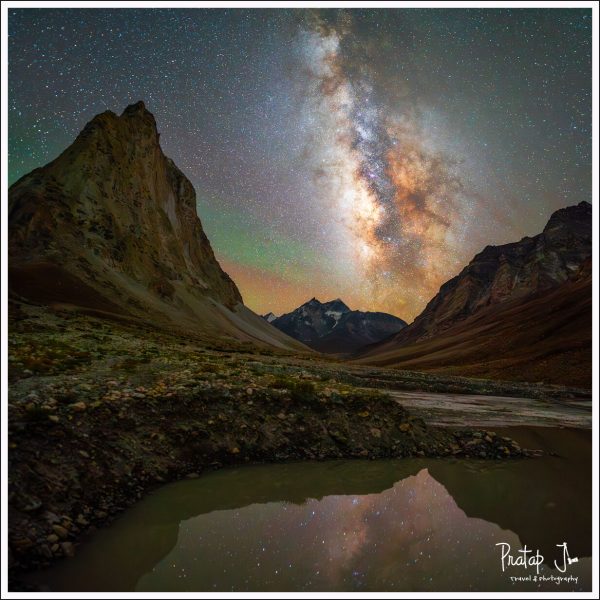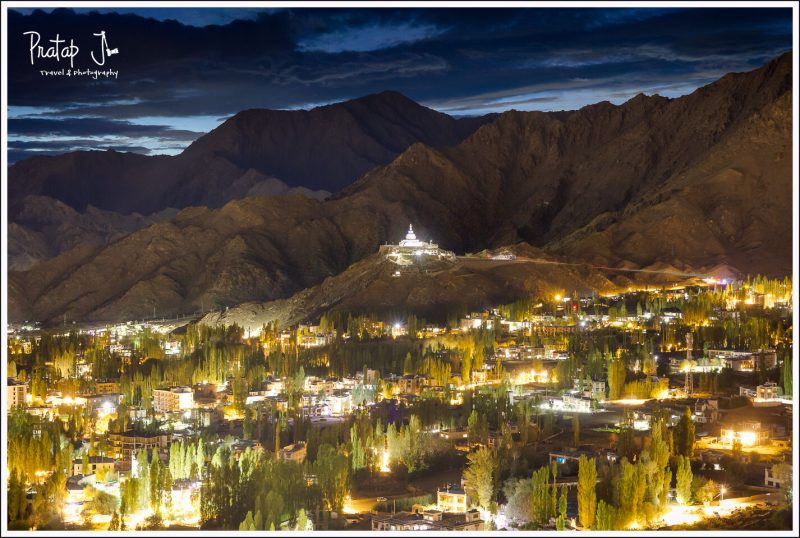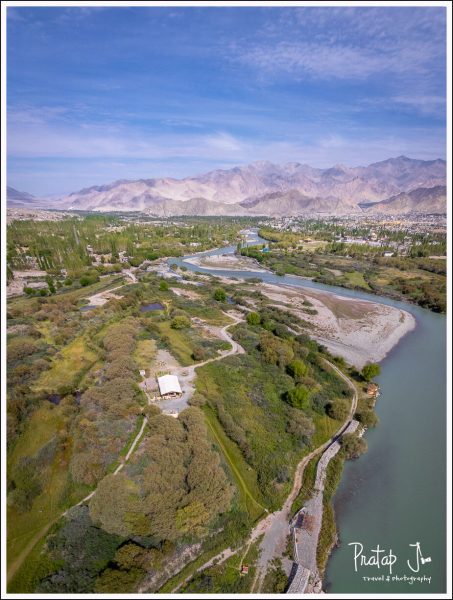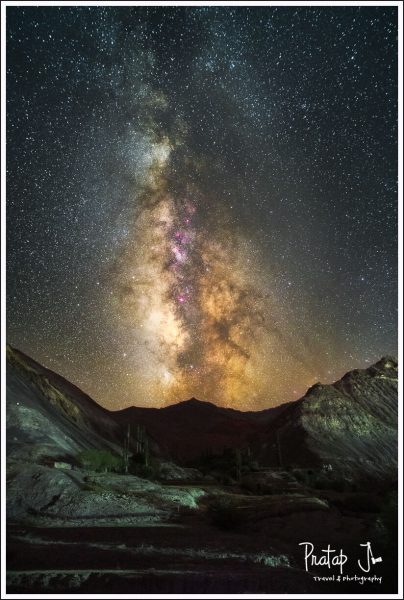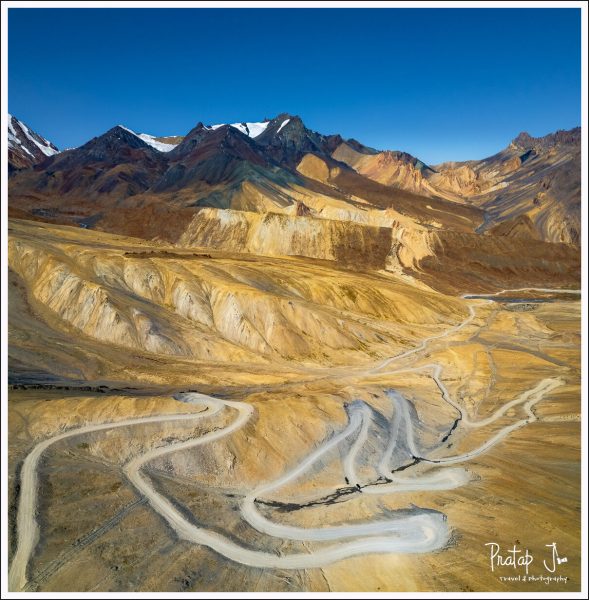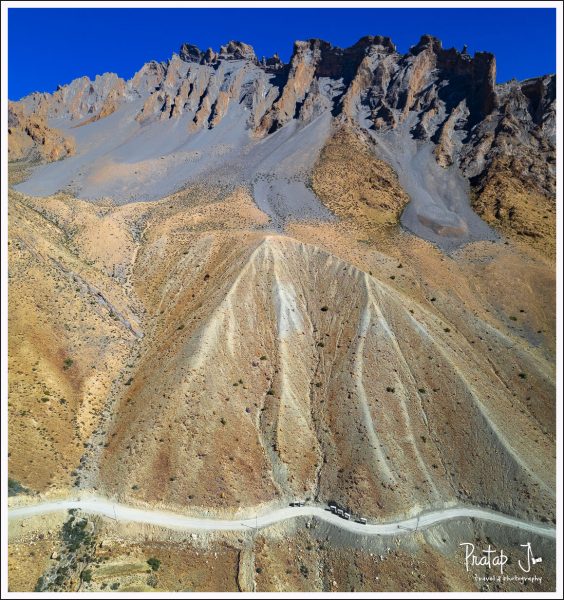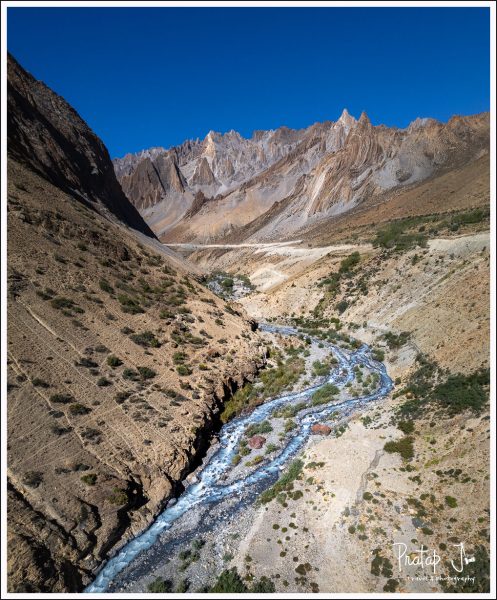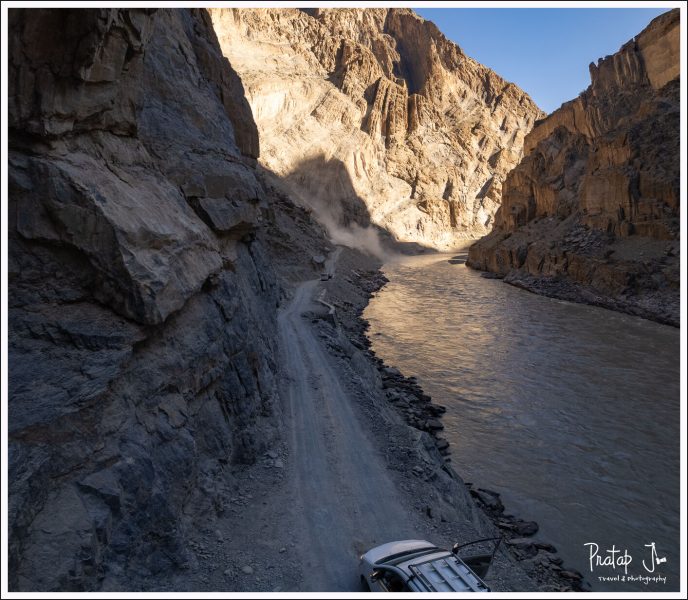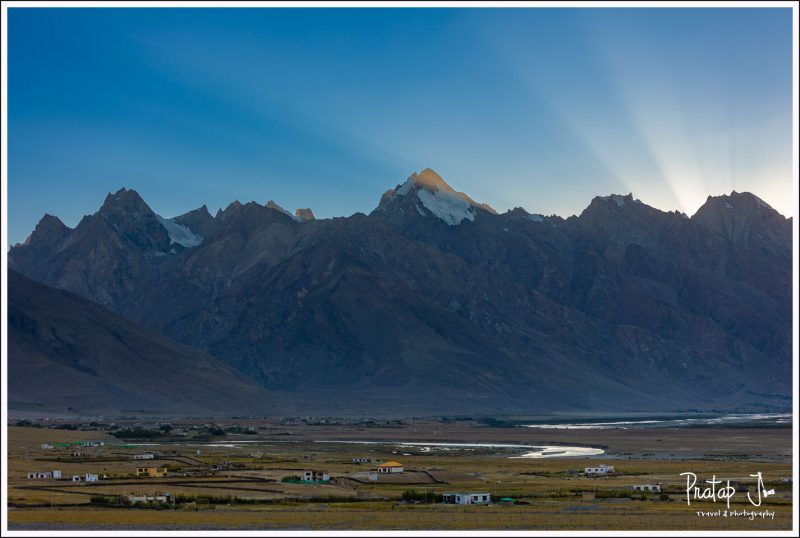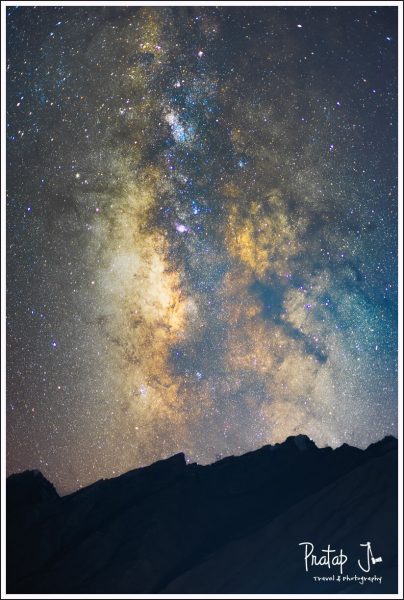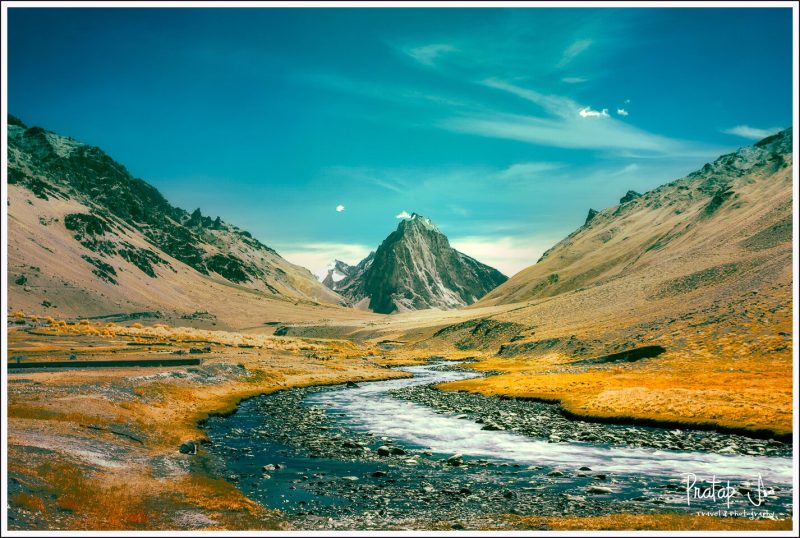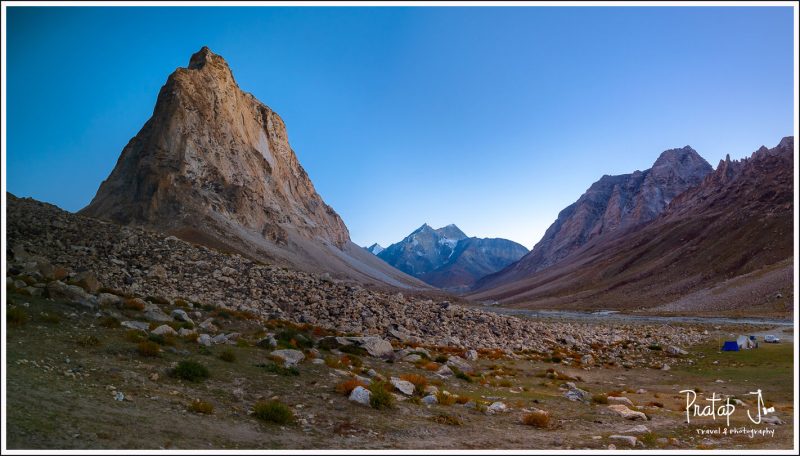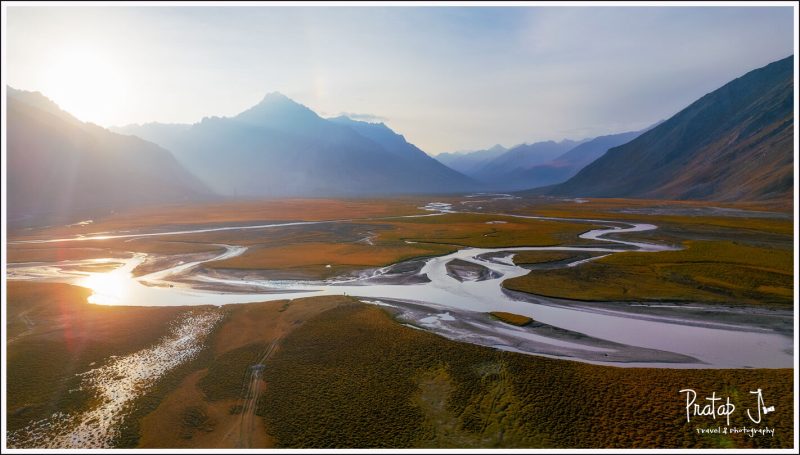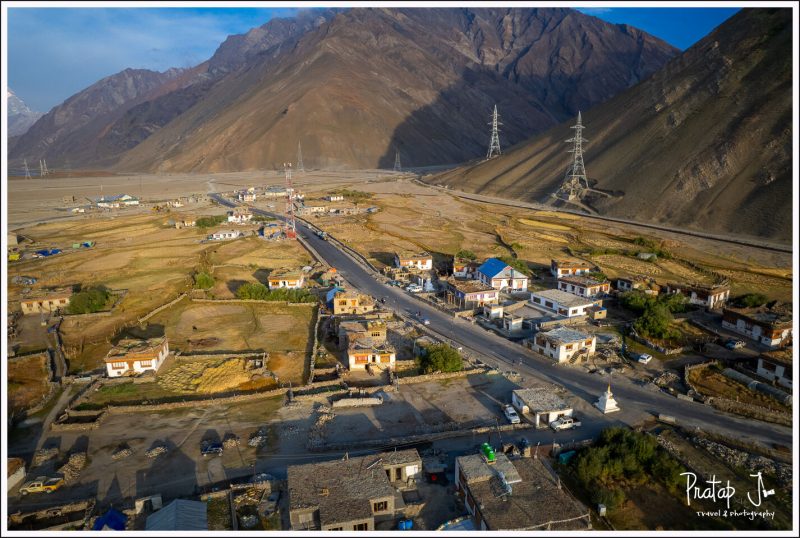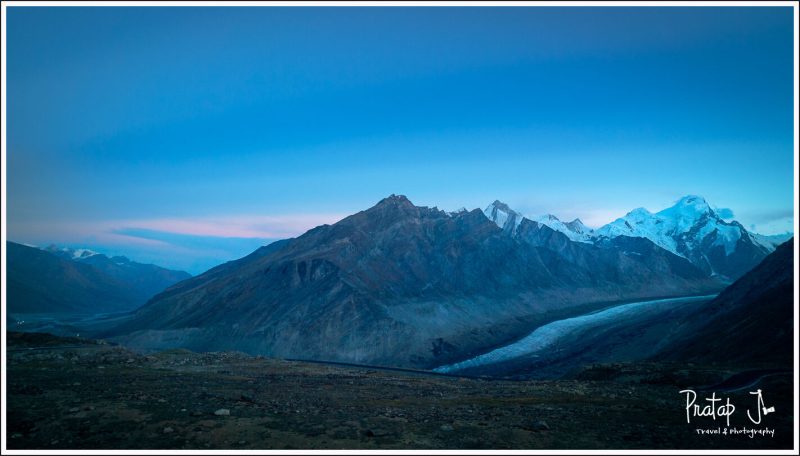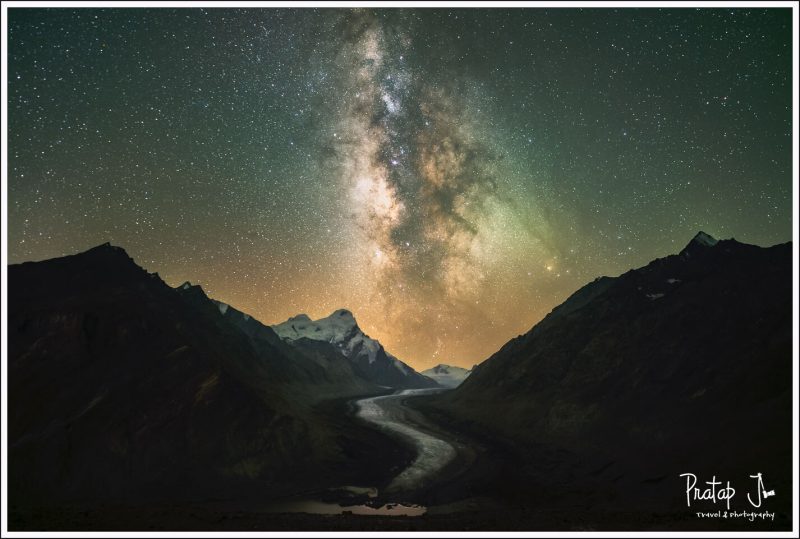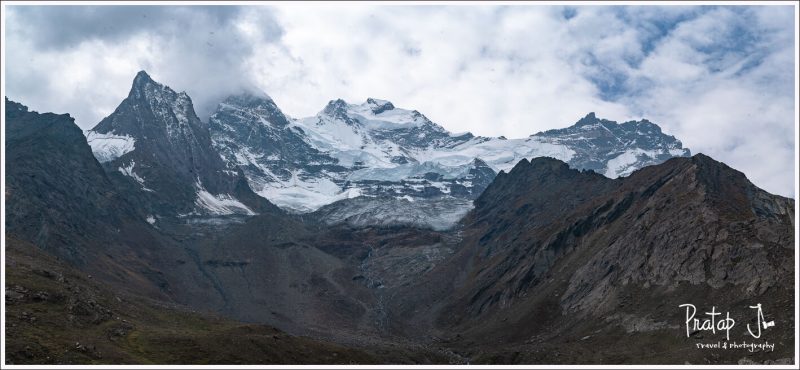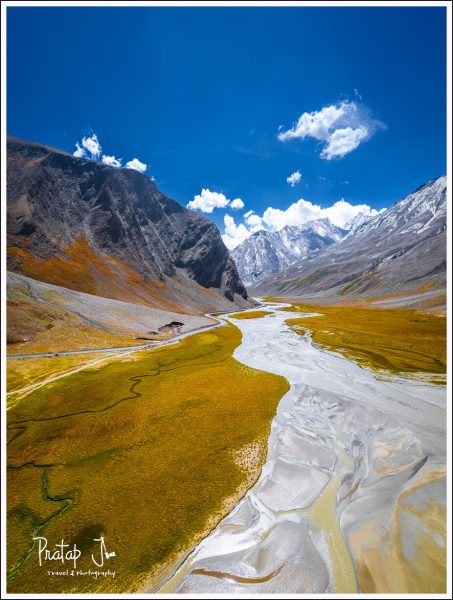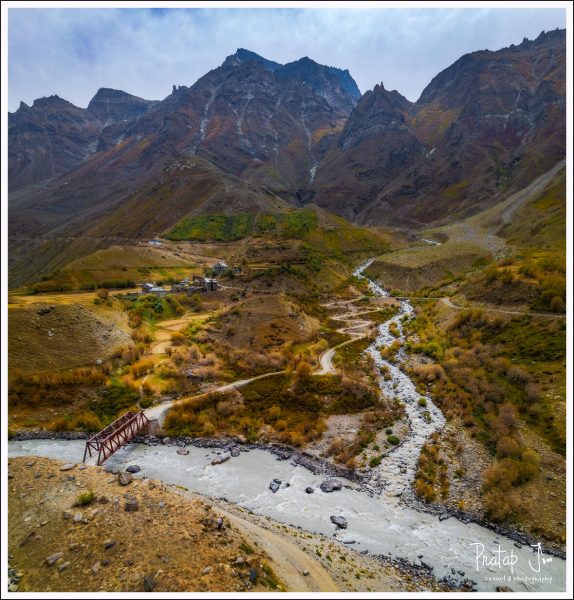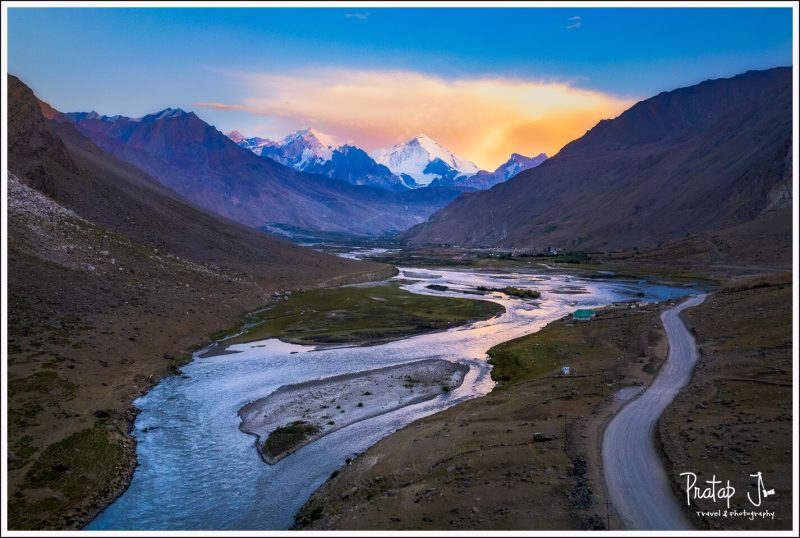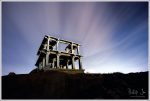Standing beneath a blanket of twinkling stars, camera pointed at the luminous core of the Milky Way, waiting eagerly for the camera shutter to close – this is an obsession which goes beyond a hobby called photography. In the age of AI photography, you can generate the end result of the capture digitally. But there is no comparison to being in the field in the silence of the night, away from light pollution, photographing the real thing. To me, these journeys in search of dark skies is a part of my life where I feel the most alive.
A group of 6 of us traveled to Ladakh to capture the Milky Way in September 2023. Little did we know that our trip would be a special one – because Zanskar, the region we traveled to, is at the cross-roads of change. It was not very popular among tourists until recently. On our trip, we only saw bikers and other hardcore adventure enthusiasts journeying across the harsh landscape. Zanskar is the land of high mountain ranges, deep valleys, and the Zanskar River. Zanskar’s remoteness is due to its isolation and challenging terrain, making it relatively difficult to access. During the winter, when the road is snowbound, Zanskar can only be accessed by trekking or using traditional routes over frozen rivers and passes. This isolation has allowed the region to maintain its unique cultural heritage and traditions, and it has become a destination for trekkers and adventure enthusiasts seeking the beauty of its rugged and pristine landscapes.
When I started planning this trip, Ladakh wasn’t even on my mind. I wanted to travel to Spiti Valley. Unfortunately, 2022 will be remembered as the year that the monsoons devastated Himachal Pradesh. Manali and surroundings bore the brunt of nature’s fury. Despite the tour operating stating that travel to Spiti is possible, we took a unilateral decision to avoid visiting Himachal Pradesh. Visuals of the raging waters washing away highways and toppling buildings was enough to convince me that climate change is real. Our generation is seeing the effects of it. Nature’s wrath on Himachal is a great tragedy and who knows what type of changes in weather patterns the world will experience in the coming years.
We began considering other destinations for our trip. With no concrete plan materialising, we almost gave up on going anywhere. Our tour operator based out of Spiti wasn’t able to give us a good itinerary for night sky photography in Ladakh. Meanwhile, another friend of mine asked us to join her group to Zanskar. That group had everything planned with the help of a local guide based out of Leh. So, it was only natural that the two groups decided to do the Zanskar trip together. Ours was a one week itinerary while the other group had a 2 week itinerary with the second half dedicated to birding.
Our Spiti-based tour operator was the best in that part of the world. Yet, he did not have a readymade plan for night sky photography. He asked us to pick the places where we wanted to go after dark and pay the drivers overtime to take us there. We faced similar challenges when interacting with the guide based out of Leh. He did not really understand our requirements for night sky photography. The bottom line is that we astrophotographers are on our own. Our requirements don’t fit any readymade tour package, so it just easier to go on a dedicated photography tour like I did last year. I visited Singalila National Park in West Bengal on a photo tour. You can watch my travel video here.
The thing about wide angle astrophotography is that the visuals that you create are only as good as the foreground in the photograph. To find good foreground, you must spend time scouting for locations. This can happen only if you reach your destination before dark, or know the area from a previous trip. I have visited Spiti twice already, so I had a fair idea about what to expect. However, when researching on Zanskar to plan our Milky Way photography, I found very little information on Google. I hope this blog post comes in handy if you are planning to go to the places mentioned below for stargazing or Milky Way photography.
The Itinerary
- Day 1: Bangalore to Leh via Indigo Airlines. Arrival in Leh by 7 am. Acclimatisation day. Stay at Indus River Camp.
- Day 2: Leh to Lamayuru. Stay at Moonland hotel.
- Day 3: Lamayuru to Padum via Sirsir La. Stay at Hotel Rigyal.
- Day 4: Padum to Gonbo Rangjon (also called Gumbok Rangan).
- Day 5: Gonbo Rangjon to Padum. Stay at Hotel Rigyal.
- Day 6: Padum to Rangdum. Stay at Acho Camping and Restaurant.
- Day 7: Padum to Suru Valley. Stay at Suru Valley Resort.
- Day 8: Suru Valley to Lamayuru. However, we changed our plan and went straight to Leh.
- Day 9: Leh
- Day 10. Depart
This itinerary was largely based around visiting Gonbo Rangjon for astrophotography. In hindsight, it wasn’t the most optimal one. There are a few things we could have done differently. What is that? Read on.
Lamayru – Padum – A Jagged Gateway to Zanskar
Leh is urbanising rapidly and has all the comforts of a modern city. But the real feeling of being in a high altitude desert can be experienced only after leaving the capital city. After a day of acclimatisation, we left for Lamayuru after a sumptuous meal at The Indus Valley Camp. The tarmac was excellent all the way, thanks to the current Government’s focus on developing the borders. After checking into the hotel at Lamayuru and relaxing for a bit, we took our first Milky Way photo beside the famous ‘moon land’ surface that evening. The sky was exceptionally clear that night, and the Milky Way was one of the best I had shot till date. Our luck with clear skies set the norm for the next few days of our trip. We had to dodge headlights because the spot we had chosen was close to the highway though. This would again be the norm in the coming days.
Traveling from Lamayuru to Padum, we were on what could be described as the world’s worst road. We drove on a rubble path cut from steep jagged mountains. The Zanskar river kept us company till we reached Padum. The famous Chadar trek is on this route, undertaken when the Zanskar river freezes in winter. The journey was long and tiring. We reached Sirsir La pass at 10.30 am. Though stark and treeless, the terrain had the most interesting and uneven mountain peaks in all kinds of abstracts shapes and colours. Soon, we entered the Zanskar valley – a region where nature’s unique carvings boggles the mind.
Padum is the administrative centre of the Zanskar tehsil in Kargil district. It is fairly developed, considering how long it takes to reach from Leh. In ancient times, it served as one of the two capitals of Zanskar Kingdon. with the other being Zangla. We did see the Zangla palace from the highway as we drove towards Padum but our itinerary was so packed that we could not visit.
The government is developing the infrastructure in Zanskar on a war footing. At one place, we were blocked by an earth mover demolishing the mountain side to widen the road. This delayed us and it was evening when we reached Padum. We checked into the hotel and made quick plans to capture the Milky Way that evening. Since our drivers had agreed to only take us within 5 km of Padum, we settled for a river bed just outside Padum for that evening’s photography. Light pollution from Padum lit the horizon, but the Milky Way was bright and clear in the sky.
Ideally, we should have reached Padum well before sunset. We should have had an opportunity to scout around for good spots to capture the Milky Way. But given the treacherous drive, and our frequent breaks to take photos, it wasn’t a fair ask on our part. The learning from this is that travel in the mountain is alway unpredictable. Always stay an extra day at your best destinations.
Padum – Gonbo Rangjon – Demystifying the Mythical Mountain
Plenty of Milky Way photos from Gonbo Rangjon have been popping up on my Instagram feed in the past few years. Given how beautiful the night sky looks in the backdrop of this pointy mountain, we were all eager to make our own photographs with this mountain. At the time of planning, information about stay and travel to Gonbo Rangjon was scarce. In my mind, Gonbo Rangjon felt like a mythical place that only astro photographers visited. The idea was shattered when we reached the campsite and saw that the new Manali-Zanskar highway passes right beside the mountain. This ruined many things for me in my head. A bigger let down would come two days later.
The problem with beautiful places in India is that once it catches the fancy of the Instagram crowd, everything about it will be done to death. With the new highway making access easier, Gonbo Rangjon can be reached in just 5-6 hours from Manali. My guess is that Gonbo Rangjon will blow up as the next most instagrammed spot starting 2024. The impact of this will be felt on the ground – more footfall means more litter. The campsite is on a large, pristine grazing ground, beside which runs a river. As more such campsites come up, capturing the Milky Way at Gonbo Rangjon may no longer be possible. Of course, this would bring prosperity to Kargyak, the nearest village, so I have no right to complain.
Gonbo Rangjon means God’s Mountain and is sacred to the Buddhists. Kargyak, has a few homestays. The other option is to camp at the base of the mountain. There is a source of clean water near the grazing ground and Acho Camping is also a restaurant.
The Swiss tents at Acho Camping where we stayed were pretty good. The toilet situation was a bit unconventional, but I had seen similar loos in Chandratal. The base of the mountain where we stayed is at 14,800 ft. The peak rises to another 3310 feet. Gonbo Rangjon looks deceivingly small but it towers over the landscape which has no other pointy mountain.
We had only one night to spend at Gonbo Rangjon and the Gods ensured that it was a memorable one. The stars in the night sky shone brilliantly, and the Milky Way was so clear and beautiful that all of us regretted not planning for a two night stay at the camp. There were times when I just wanted to lie down and gaze at the sky, forgetting that I had traveled 3 days to capture photographs at this location.
Even after having acclimatising at Leh and Lamayuru, both at 11,000 ft, my body found it difficult to cope with the altitude. Mobility was difficult due to shortness of breath. Apart from your expertise as a photographer, your fitness also plays a huge role in the kind of photos that you can make. After shooting a sunset Timelapse, we proceeded to a different location to shoot the Milky Way. Gonbo Rangjon against a star studded sky was a sight to behold.
A special shout out goes to Stanzin running the camp site. He was not only hospitable under the dining tent’s tarpaulin roof, but even under the blanket of stars. He brought us hot water when we were out shooting, careful not to disturb our camera setup. The food he and his wife cooked was excellent, given that the camp was nowhere close to civilisation. He let us use his solar unit to charge our batteries despite the lack of electricity. A true Buddhist hero of the mountains.
Randgum – A Fairyland Very Few Talk About
From Gonbo Rangjon we drove to Padum rather quickly as we did not stop anywhere. We headed out further away from Padum that evening to shoot the Milky Way. But the light pollution from Padum was inescapable. Shooting at the Zangla palace would have been a good idea if we had the time for it. One lesson learnt here is to stay in traditional homestays in small villages, rather than in bigger towns like Padum. The facilities at these homestays may not be as good as at the hotel, but it is a unique opportunity to experience traditional Ladakhi life while staying closer to nature.
The next day we checked out of Padum and headed towards Rangdum. I thought the best of Zanskar was behind me. I was so wrong. We first halted at Pensi-La pass and saw the mighty Drang-Drung glacier. It is one of the very few glaciers in the world which you can see from the road. The other one I had been to, and even walked on, was in Iceland. Read about it here.
I have to admit that seeing the glacier viewpoint beside the highway was a let down. Photos of camps near the glacier which I had seen online let me to believe that Drang Drung was another remote location which only photographers visited.
The Government is in the process of erecting an electricity grid in this region. The sight of tall steel towers coming up in the Zasnkar valley, obstructing every beautiful view was depressing. I think 2023 would be the last opportunity to see the beauty of Zanskar in its rawest form. The ugly symbols of development would soon become inescapable. When I say this, I also understand that this development is long overdue. The locals welcome it, as it will improve trade, their access to medical facilities, and bring in tourism.
That evening, after much convincing, our taxi drivers took us to Pensi La Pass so we can capture the Milky Way from this iconic location. It was extremely windy and cold initially, but it was worth the time we spent there. After staying the night at Rangdum, we left for Suru Valley. The views from the car seat left me spellbound throughout. The geography around Rangdum was very different from what we had seen in Zanskar till now. Rangdum to Suru had several snow clad peaks, glaciers, high altitude rivers, and waterfalls. The vegetation started to get abundant as we got closer to Suru Valley. We were close to the Kargil basin, which is one of the greenest regions of Ladakh.
The hotel where we stayed at in Suru Valley had many interesting books on the historic places in the region. None of these appeared to be on the tourist map. Rangdum and Suru Valley’s charm is largely unknown to the rest of the world. Our driver told us that that several trekking expeditions, some of them very technical, start from Rangdum. While enjoying the views of high altitude beauty around Rangdum from the comfort of the car, I could sense that there were several spots which would make for great Milky Way images. During moments like this, I wish that time was on my side. I need another lifetime to explore the unexplored, attempt the unattempted, and capture the unseen. But will these places be the same then?
We had a fabulous view of the Nun-Kun peaks from the hotel room, but that was it. There was nowhere else we could go to do any more photography. Suru Valley lies in Kargil district and our taxis, which were from Zanskar, weren’t allowed to show us around as per the union rules.
At Suru Valley we decided to decide to return to Leh a day early and skip the stay at Lamayuru. We spent two nights in Leh and then flew back to our respective hometowns.
Conclusion
Different people want different things from their travel plans. Some might just want an escape from routine. Some may want to go to a new place and try something different. My best memories are made when seeing nature in its most pristine form, even if it means stepping outside my comfort zone. Yes, compared to other trips (like my earlier trip to Ladakh), the weather was much more tolerable. Yes, we traveled in comfortable Innovas. Yes, we stayed in good budget hotels. But we put in long hours of travel to reach a destination, only to scramble to capture the stars. Many times, the night sky was so beautiful that setting up the camera and capturing the Milky Way seemed like an unnecessary distraction. And during the day, on those treacherous roads, the eyes couldn’t get enough of the beauty of the Himalayas.
Ladakh is like no other place on earth. No amount of photographs and videos that you watch on your small mobile/tablet screen can do justice to the way Mother Nature has arranged the mountains, rocks, rivers, glaciers and the flora of the land. The best and only way to experience it is when you are there, breathing in the rarified high altitude air, huffing and puffing after every small exertion. AI cannot give you that experience, no matter when in the future you are reading this.
Gear I Carried On This Trip
I have to confess that I carried way too much gear on this trip. It was because of the sense of eagerness to capture the Milky Way in one of the remotest parts of India. I ended up throwing in everything but the kitchen sink into my camera bag. Here is what I carried:
- 3 camera bodies. A Sony A7SIII, a Canon EOS R6, and a full spectrum Sony a6100.
- 4 leses. A Sony 21mm F1.8, a Sony 16-35 f2.8 GM, a Canon 50mm, a Canon 70-300mm IS III, an Irix 15mm f2.5.
- Syrp Genie and Syrp Genie Mini motion control devices.
- 3 tripods and a slider system for the motion control devices.
- A DJI Mavic Air2s drone
- GoPro Hero 9 and Insta 360 One R
This is not only a lot of equipment to carry, but also costs a lot. I have made several sacrifices to acquire this gear over many years. In Ladakh, these sacrifices felt justified. I hope you feel the same as well. Watch my timelapse showreel from Zanskar here:

